Kangkang Hu
Deep Snapshot HDR Reconstruction Based on the Polarization Camera
May 12, 2021
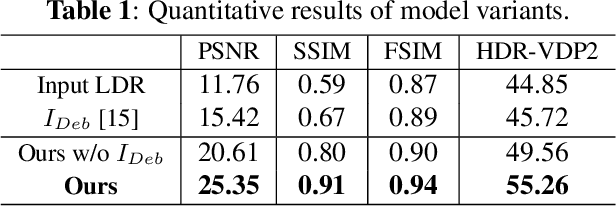


Abstract:The recent development of the on-chip micro-polarizer technology has made it possible to acquire four spatially aligned and temporally synchronized polarization images with the same ease of operation as a conventional camera. In this paper, we investigate the use of this sensor technology in high-dynamic-range (HDR) imaging. Specifically, observing that natural light can be attenuated differently by varying the orientation of the polarization filter, we treat the multiple images captured by the polarization camera as a set captured under different exposure times. In our approach, we first study the relationship among polarizer orientation, degree and angle of polarization of light to the exposure time of a pixel in the polarization image. Subsequently, we propose a deep snapshot HDR reconstruction framework to recover an HDR image using the polarization images. A polarized HDR dataset is created to train and evaluate our approach. We demonstrate that our approach performs favorably against state-of-the-art HDR reconstruction algorithms.
Arithmetic Distribution Neural Network for Background Subtraction
Apr 16, 2021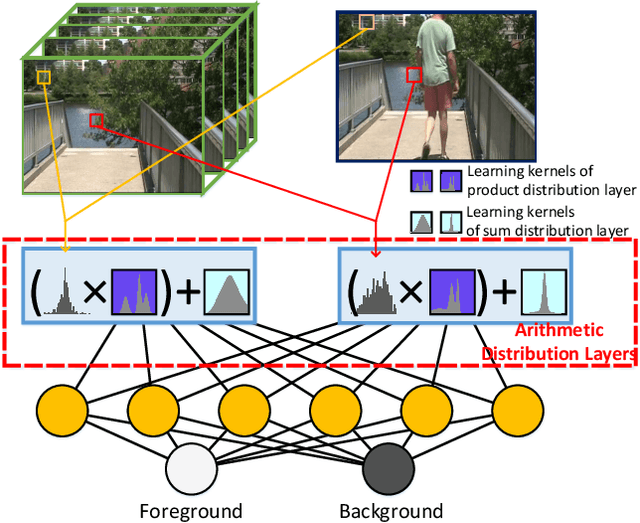
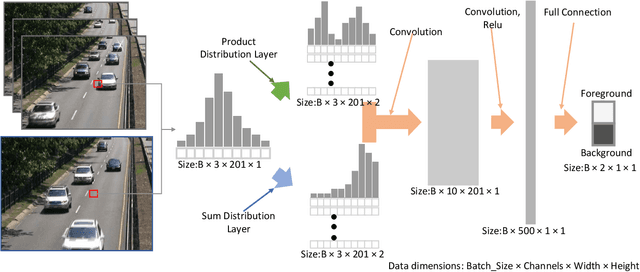
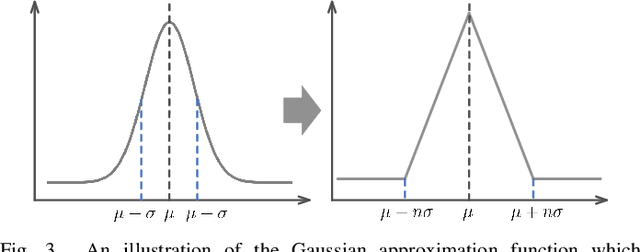
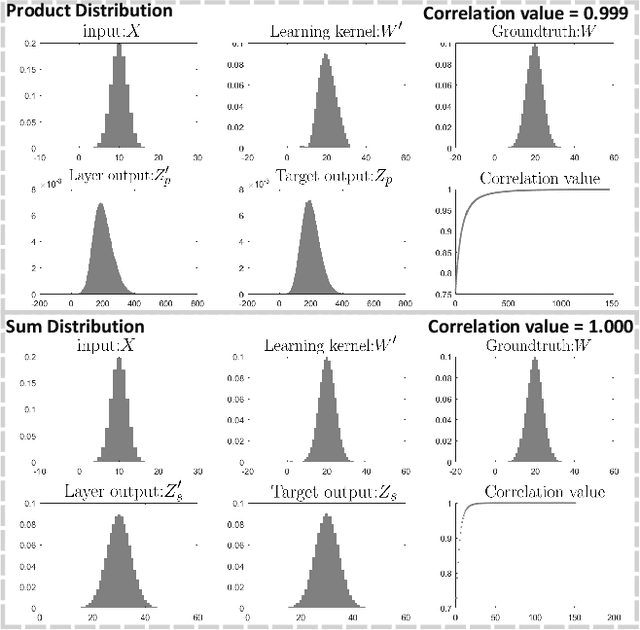
Abstract:We propose a new Arithmetic Distribution Neural Network (ADNN) for learning the distributions of temporal pixels during background subtraction. In our ADNN, the arithmetic distribution operations are utilized to propose the arithmetic distribution layers, including the product distribution layer and the sum distribution layer. Furthermore, in order to improve the accuracy of the proposed approach, an improved Bayesian refinement model based on neighboring information, with a GPU implementation, is introduced. In the forward pass and backpropagation of the proposed arithmetic distribution layers, histograms are considered as probability density functions rather than matrices. Thus, the proposed approach is able to utilize the probability information of the histogram and achieve promising results with a very simple architecture compared to traditional convolutional neural networks. Evaluations using standard benchmarks demonstrate the superiority of the proposed approach compared to state-of-the-art traditional and deep learning methods. To the best of our knowledge, this is the first method to propose network layers based on arithmetic distribution operations for learning distributions during background subtraction.
 Add to Chrome
Add to Chrome Add to Firefox
Add to Firefox Add to Edge
Add to Edge